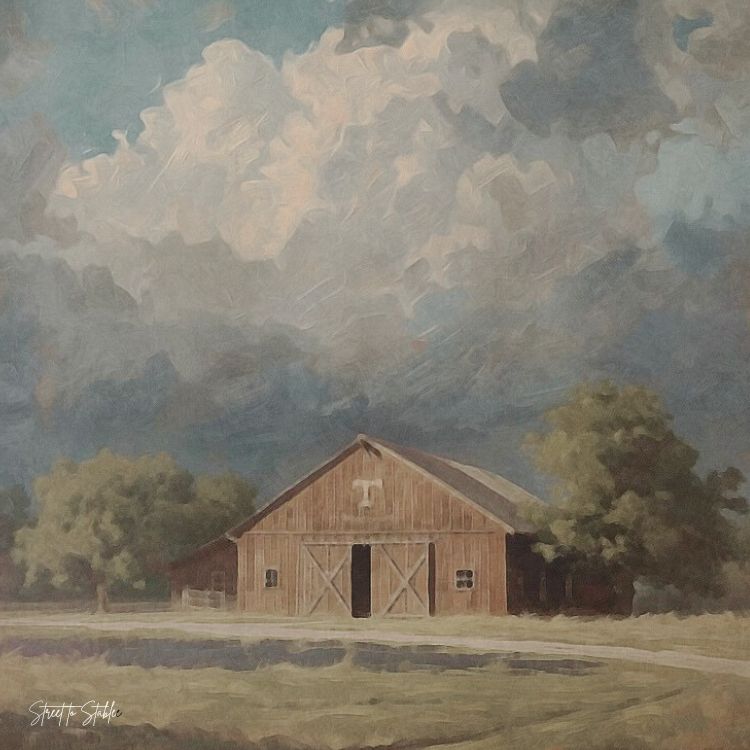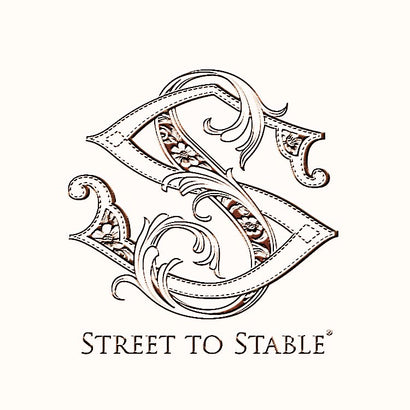
COFFEEHOUSE HERITAGE: The Luxury of Ritual Over Transaction
Street to Stable® | Essays in the Spirit of Hospitality ~ In collaboration with K.M. Thornton & Co.

“Every cup of coffee is the culmination of many hands, each a steward of something essential: the land, the bean, the moment of service.”
The Invitation Within
The welcoming scent of freshly roasted beans mingles with warm spices and sweet extracts, drawing one toward the polished marble counter. The murmur of voices — pairs and strangers seated side by side — threads through the air, each cup a small anchor amid the smooth wood and quiet bustle. Books lie open, laptops hum, and soft lighting pools gently across tables worn smooth by familiarity.
Behind the counter, the barista offers a knowing smile — greeting by name, remembering not only an order but the ease of daily familiarity. Steam hisses as shots are meticulously pulled from the espresso machine, the aroma of warm pastries drifting outward from the hands that craft them — house-made and finishing in the oven. A look of pride, met by a nod of appreciation, accompanies the delivery intentionally presented using porcelain serve ware — a gesture of shared respect between the hands that serve and those that receive.

Whether identified as a coffeehouse or a café, it becomes something more than a stop along the way. It is a sanctuary of welcome — a “home away from home” — a space of refined comfort where artistry meets ease. Within these walls, one feels the importance of purpose: not simply to purchase, but to think, to create, to connect. It is hospitality expressed through intention — an unspoken gesture of “you are welcome here,” and an invitation to be wholly present, to commune, and to come alive.
Historical Lineage: A Heritage of Gathering, Conversation and Craft
The origins of the coffeehouse are widely attributed to the Ottoman Empire, where by the late fifteenth and early sixteenth centuries kahvehane, Turkish coffee houses, had begun to appear as central gathering places. These early establishments served as communal anchors where people met to converse, exchange news, listen to music, and engage in shared games. Often described as “schools of wisdom,” they became woven into the daily rituals and social fabric of Ottoman life.
Beyond the empire, one of the earliest known European coffeehouses is believed to have opened in Italy in the mid-seventeenth century. From there, the custom spread across Europe, where cafés quickly became hubs of commerce, literature, politics, and the arts. In London, they earned the moniker “penny universities” for offering inexpensive access to conversation, news, and ideas. Through each cultural adaptation, the essence endured: gathering, conversation, and craft. (https://en.wikipedia.org/wiki/Coffeehouse)
Stewardship and Craft: From the Earth to the Cup

Every cup of coffee is the culmination of many hands, each a steward of something essential: the land, the bean, the moment of service. The farmer tending high-altitude terrains, aware of weather patterns, terroir, and varietal; the roaster interpreting origin through heat and time; the barista crafting balance between temperature, texture, and timing. Together these represent “craft in service of community.”
In the modern café, the barista takes on the role of modern host: not merely to serve, but to curate an experience of simple luxury. The design of the space, the warmth of tone, the flow of service — all reflect hospitality born from the agrarian root upward. The lineage of the cup becomes a metaphor for legacy: those who came before, those who serve now, and those who continue to refine the nuances of creating memorable experiences.
The Aesthetic of Welcome: Design as Hospitality

Warm wood, soft lighting, and the hush of conversation over ambient music just audible create a setting that invites one to linger. When the physical environment encourages us to stay, to think, to create, it transforms from transient space to sanctuary — a place where every detail matters. The materials, the arrangement, the scent, the music, and the rhythm of movement together form an aesthetic architecture that fosters welcome and lingering.
Through this lens, a café becomes more than a functional space; it becomes a curated third room — deliberately crafted for connection, for purpose, and for the simple act of being.
Ritual vs. Transaction: A Mirror of Our Culture
In our time, convenience often dominates the narrative. Mobile orders, drive-thrus, and takeaway cups are undeniably efficient, yet they lean toward transaction rather than ritual. The original function of the café, however, is rooted in presence: in the gesture of welcome, in the architecture of comfort, and in the conversation that begins before the cup is set down.
The idea of the café as a “third room” is grounded in sociology. In his 1989 book The Great Good Place, sociologist Ray Oldenburg introduced the term “third place” to describe informal gathering spaces beyond home (the first place) and work (the second).(https://en.wikipedia.org/wiki/Third_place) Such spaces, Oldenburg notes, cultivate warmth, conviviality, and—most importantly—community in an informal environment (https://courier.unesco.org/en/articles/third-places-true-citizen-spaces)
It is worth noting that a later visionary of contemporary coffeehouse culture, Howard Schultz, would popularize Oldenburg’s concept into shared vernacular—bringing renewed awareness to the importance of hospitality and the enduring value of communal space. The heritage-curated coffeehouse reflects this ideal. It is not merely a place to consume, but to connect—an unspoken invitation to linger, an ambiance to foster creativity between home and work, and to participate in a moment of shared civility. And yet, there is tension. Some critics argue that convenience-driven models of coffee culture—especially in the post-COVID era—have eroded the importance of human connection. (https://www.thepourover.coffee/starbucks-and-the-myth-of-the-third-place)
The question is subtle: In our rush to convenience, what do we sacrifice when we trade ritual for transaction? And in asking it, we must also consider how we might steward the original intention of the coffeehouse—preserving its legacy of fostering communal interaction, creativity and thoughtful intellect.
Within these walls, comfort is not accidental — it is the result of intention. Every element, from the bean’s origin to the atmosphere it inspires, reflects a continuum of stewardship. The grower’s care, the roaster’s precision, the barista’s quiet artistry — each serves the next in a lineage of craft that transforms labor into luxury.
Here, hospitality is not a performance but a practice: an unbroken thread between cultivation and experience. It is proof that true refinement begins long before the first cup is poured, and endures long after the last sip is gone.
The Essence of Luxury
In this way, the café becomes more than a setting; it becomes a living expression of continuity — where the essence of luxury is shaped not by novelty, but by care, attention, and the enduring stewardship of the human hand. It also becomes a place to commune and to create — where comfort and craftsmanship coexist, and where one is always reminded, in quiet and certain ways, that they are welcome.
Dedication
Dedicated to Noley’s — a cherished hometown gathering place where those who steward from within transform daily ritual into purpose and community. A haven where craft, conversation, and care converge in the spirit of belonging.

In the Spirit of Stewardship
Kristin M. Thornton is the founder of K.M. Thornton & Co., LLC, a consultancy dedicated to preserving and advancing heritage-driven enterprises through The Arc of Stewardship™—a proprietary framework for cultivating legacy, authenticity, and trust.
Through Street to Stable® | Essays in the Spirit of Hospitality, she explores how provenance and place shape meaningful connection, drawing on her work guiding artisans, agricultural brands, and heritage institutions primarily across the North American landscape.
To learn more about The Arc of Stewardship™ and opportunities to engage in legacy-driven collaboration, visit kmthornton.com.
Sources & References
Within Essay:
“Coffeehouse.”
Wikipedia. https://en.wikipedia.org/wiki/Coffeehouse
“Third Places: True Citizen Spaces.” UNESCO Courier. https://courier.unesco.org/en/articles/third-places-true-citizen-spaces
“Starbucks and the Myth of the Third Place.” The Pourover Coffee.
https://www.thepourover.coffee/starbucks-and-the-myth-of-the-third-place
For additional context:
Oldenburg, Ray. The Great Good Place. New York: Paragon House, 1989.
“Coffeehouses in Ottoman Society.” Daily Sabah, July 20, 2018.
https://www.dailysabah.com/history/2018/07/20/coffeehouses-in-ottoman-society
“Ottoman Coffeehouse.”
Wikipedia. https://en.wikipedia.org/wiki/Ottoman_coffeehouse
Leave a comment
Comments will be approved before showing up.
Also in Essays of Legacy, Heritage and Continuum of Care

THE MOST GENEROUS GIFT: Passing Legacy Through Heirlooms

FROM THE LAND, PROOF: Cultivating Trust Through Genuine Acts of Hospitality

